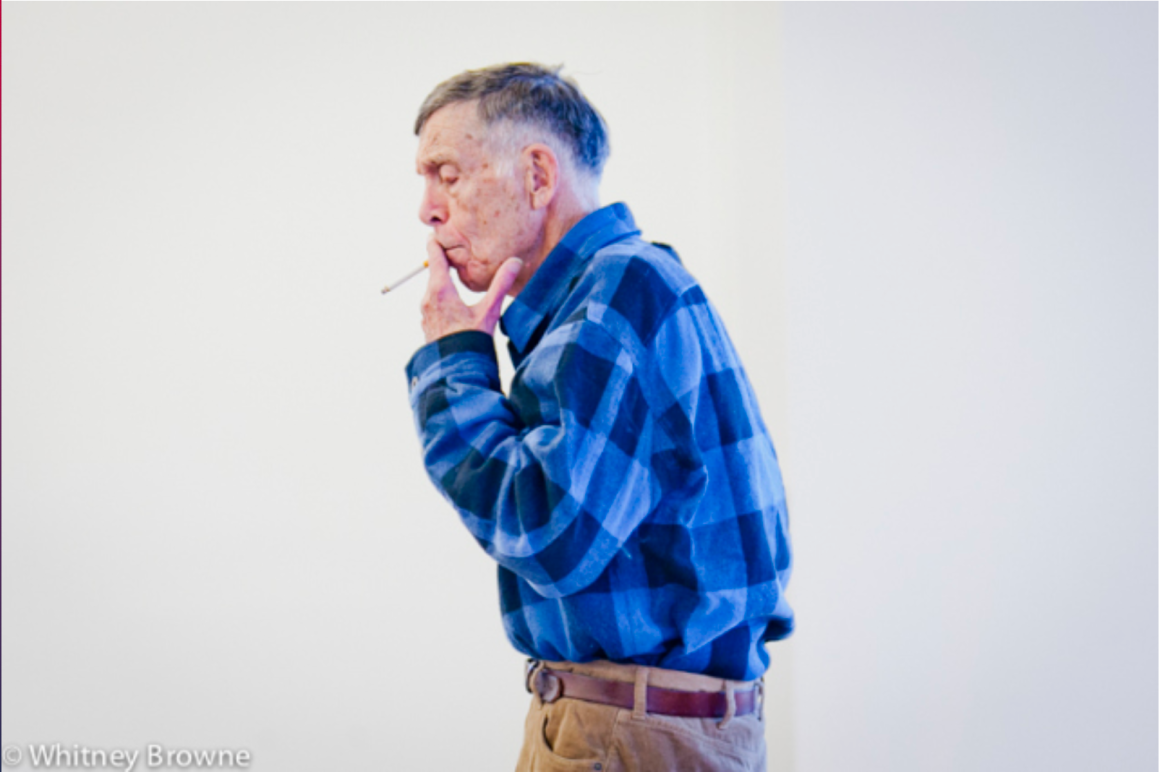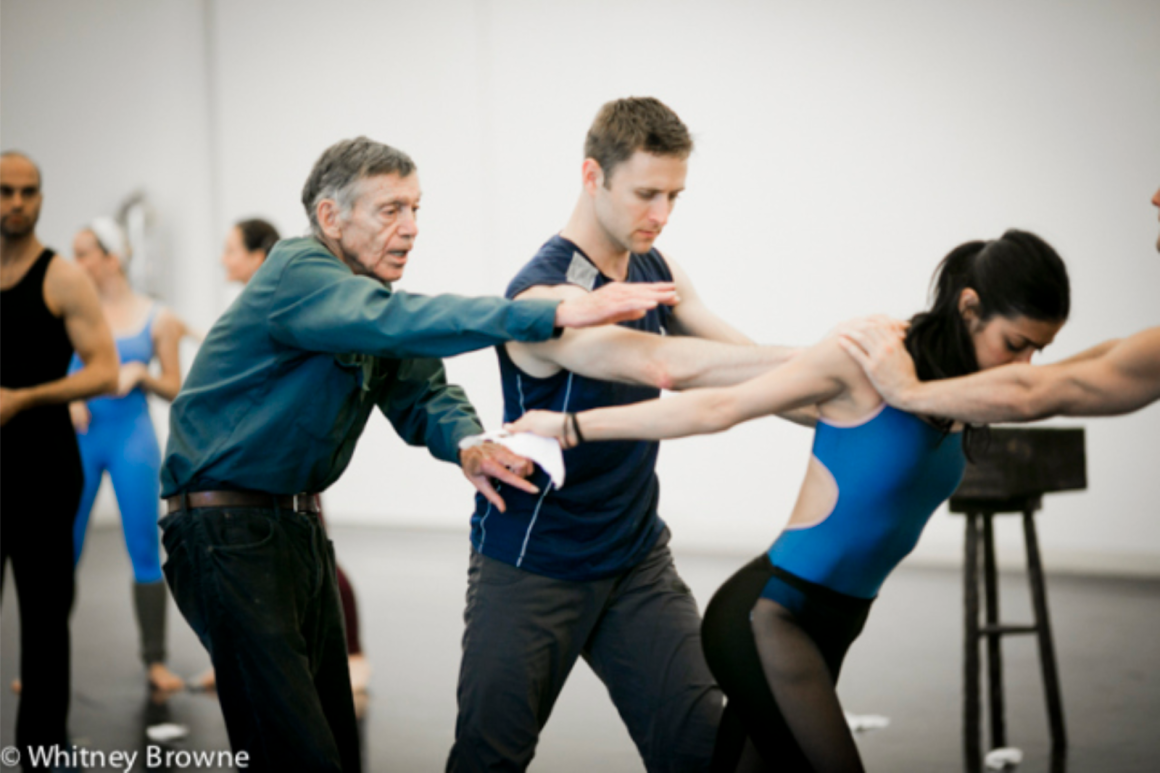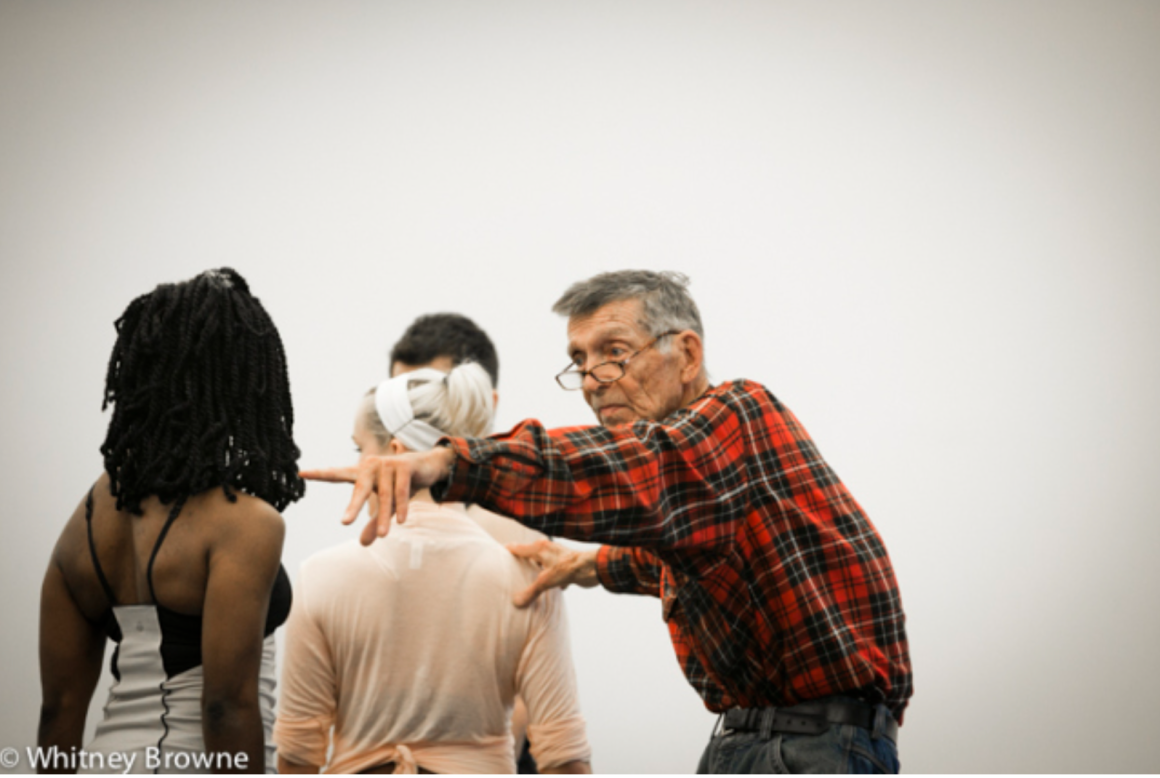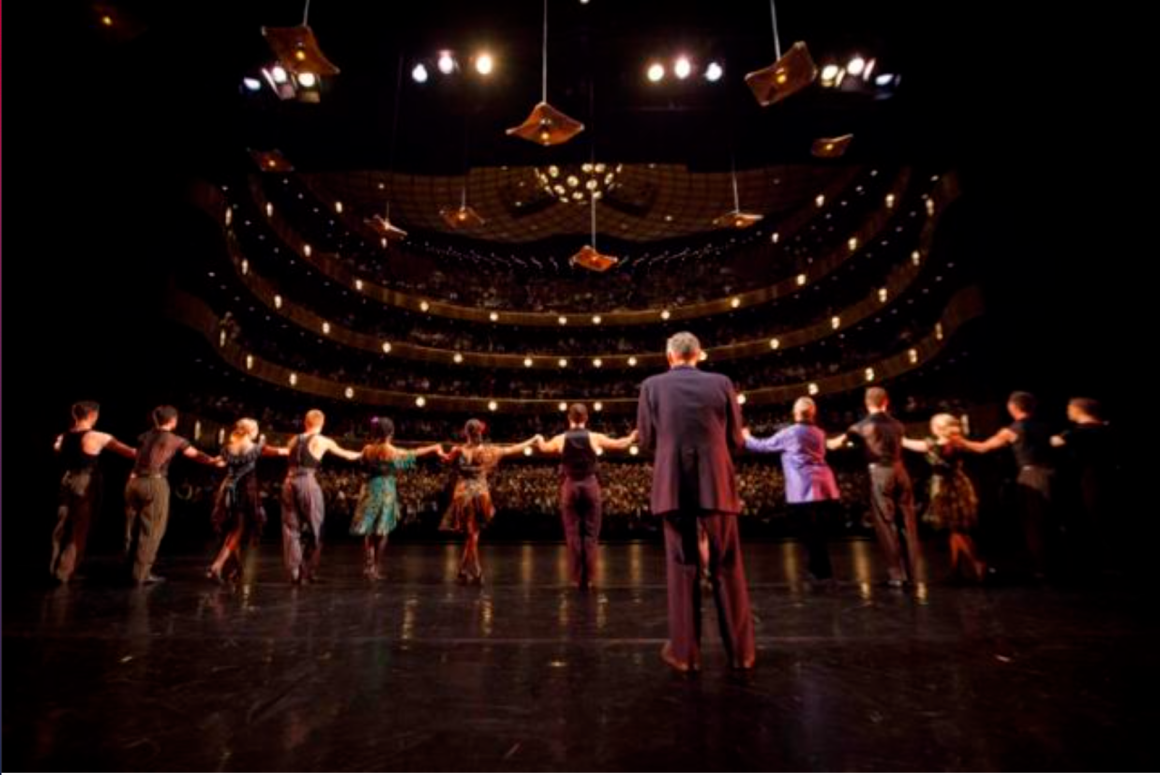This story was written by Lo-Down Arts Editor Traven Rice. It was originally published in our February 2014 magazine. See more images from photographer Whitney Browne’s excellent series, “Create With Taylor” at whitneybrowne.com.
Paul Taylor, the internationally acclaimed modern dance choreographer, was immersed in creating his 140th work when we met at his comfortable penthouse apartment in the East River Cooperative on Grand Street on a cold December morning. It was 8 a.m., a time chosen by the early-rising Mr. Taylor himself, who at the age of 84 remains one of New York’s most prolific artists. A pack of cigarettes sat on the coffee table in front of him untouched, a rare occurrence (Taylor insists smoking is one of the keys to a long and productive life).
He was gracious and relaxed, even though he’s never had much enthusiasm for interviews. The dance piece, Marathon Cadenzas, is one of two new works debuting in March as part of the Paul Taylor Dance Company’s 2014 season, its 60th anniversary.

Universally recognized as one of the most influential choreographers of our time, three years ago Taylor moved his company to the former Lippman Auditorium at 551 Grand Street, which is owned by the East River Co-op. The move was a coup for an often overlooked section of the Lower East Side, as well as a big morale boost for the neighborhood’s arts community, which has lost many key institutions in past years. But it also represented an important new chapter for the venerable dance company, which established a state-of-the-art rehearsal space and began to develop roots in an evolving neighborhood.
While dancing for the likes of Martha Graham, Merce Cunningham and George Balanchine early in his career in New York, Taylor began creating his own dances in the 1950s and, incredibly, has made two new works every year since the company’s inception. He is among the last living members of America’s original modern dance visionaries and, with each new season, continues to push artistic boundaries.
A few of the honors that have been bestowed on Taylor include the National Medal of Arts by President Clinton, three Guggenheim Fellowships and a MacArthur Foundation Genius Grant. He is a Kennedy Center Honoree and holds honorary doctorates from several universities. Having been elected to French knighthood in 1969, Taylor was awarded that nation’s highest honor, the Légion d’Honneur, in 2000 for exceptional contributions to French culture.

Martha Graham dubbed him “the naughty boy of modern dance.” Taylor’s work is always experimental, sometimes controversial, sometimes dark and often quite humorous. He has influenced dozens of emerging choreographers, who have gone on to choreograph — many for their own troupes — including David Parsons, Twyla Tharp, Takehiro Ueyama, Doug Wright and Lila York.
During our conversation, Taylor recounted his decision to bring the studio to the Lower East Side in 2010: “It’s a funny story. The studio was in the Village” on lower Broadway, “and our landlord wanted to rent our floor to Banana Republic” for triple the rent, “so we had to leave. …The Times put something in the paper about it.” East River Co-op manager Harold “Heshy Jacob “read it and contacted us. … It’s almost impossible to find large, columnless spaces for rent these days, and he gave us a very reasonable price, and that’s how we got here — just good luck.”
Taylor sold his historic townhouse in the West Village and donated the proceeds to the dance company’s foundation, which then negotiated a 15-year lease plus a five-year option in the Grand Street building. The company invested $4 million in a gut renovation and purchased two penthouse apartments for Taylor in the East River Co-ops that were joined. Taylor has a second home, a modest cottage he’s owned for decades, on Long Island.
This has been a time of change for the organization, and not just because of the studio relocation. After years of spring seasons at Manhattan’s City Center, the company moved to the David H. Koch Theater, home of the New York City Ballet, at Lincoln Center last year. That move, Taylor said, has been “wonderful,” with a bigger stage, comfortable seats and great sight lines. “And everybody there has welcomed us so nicely — the stage crew, ushers and everybody — so we feel right at home. … Also, we’ve been getting a much more mixed audience. … There are many more younger people coming now.”

Taylor’s two companies, the 16-member Paul Taylor Dance Company and the six-member “Taylor 2,” tour extensively around the world, but he rarely travels with them anymore unless a new piece is being presented. “I’ve traveled enough,” he says with a laugh. “I’m very glad to stay home.”
Taylor is notoriously secretive about new works, but said he should be finished with the two new pieces according to schedule. The season will also include “a lot of revivals and a few from last year… about 22 dances.”
As for his creative process, Taylor said, “I make a plan. I count out the music. … Sometimes I hear a piece of music, and that gives me an idea. Other times I have an idea and I have to find the music. [I know] what I like. … I don’t really know what other people like or want,” so “I just have to go by what I think I’d like to see.”
Taylor is surrounded by a loyal team, some members of which have been in the company for decades. Whether they’re dancers, behind-the-scenes staff or alumni, dedication to Taylor is a common theme. “Ah, yes,” Taylor said, and the respect “is mutual. … It’s like a big … professional family… and there are dancers of all different generations. I’m like the great-grandfather.” That’s an advantage, he said. “When I was their age … in the beginning, it was harder to get them to do what I wanted them to do. But now,” he said with a chuckle, “I don’t have any trouble. … They don’t give me any lip.”
The city’s artistic scene has changed markedly since the 1950s, he said: “It was very different when I first came to New York to be a dancer. The arts communities were smaller. The poets, the writers, composers, painters — there were fewer of us, and … we knew each other and we’d get together at somebody’s loft or maybe at a bar,” a diverse mix of the arts. “I was one of the younger ones, and I’d listen to them talk about their ideas. It was very educational for me. I met Bob Rauschenberg, Jasper Johns … Ellsworth Kelly, to name a few, but now there are so many dancers and other artists that that doesn’t happen anymore.”

Surviving as an artist in New York, was easier back then, Taylor said. These days, his dancers struggle financially. In the old days, “you could make money and work as a dancer. There were a lot of small companies, like Martha Graham. She had a Broadway season, and I’d dance with her. And Balanchine had one, and I did a dance of his” as a soloist with the New York City Ballet,” and there were a lot of less-well-known choreographers that I worked with. … There were a lot of musical comedies then, and we could get paying jobs that way, instead of waiting tables. So that was an advantage.”
Today, “it’s very hard and very expensive,” said Taylor. “It wasn’t that bad for me. My first cold-water flat in New York … was $20 a month or something.” It was “really crummy — it was in Hell’s Kitchen — but you could do it. And you didn’t mind because you were in the place you wanted to be.”
Now Taylor and his company are in another place he wants to be — the Lower East Side. “Oh yeah. Forever!”

EXECUTIVE DIRECTOR TOMLINSON: L.E.S. MOVE SIGNALS NEW ERA
John Tomlinson, the executive director of the Paul Taylor Dance Company, sees its move to the LES as sparking a new era for the group, with the LES inspiring the company, and the company in turn providing new opportunities for the LES.
“We feel like we are part of a growing, vibrant community here, as opposed to in Soho,” Tomlinson said of the move.
The company took advantage of its new studio space to start a school, to which there has been a great response, Tomlinson said. In the old studio in Soho, there were never classes for families and children. That neighborhood, he said “was a shopping mall on the weekends … and no one cared that Paul Taylor was there.” Now, Tomlinson said, “people stop us on the street and ask us how things are going, when the new season opens, if their kids can take classes.”
Tomlinson said he sees the studio also becoming a performance space, in addition to accommodating the company’s rehearsals and the classes. The company recently received a large grant from the city to build a separate black-box theater that it will rent out to other companies and artists for performances, lectures and events.
In the meantime, the focus is on supporting Paul Taylor as he continues to thrive creatively. “Two new works, at least, every year,” Tomlinson said. “It’s intense. It’s a ridiculously inhumane schedule. … Paul has created such amazing work for so many decades” that “all the dance press is … watching to see if he can maintain his level of greatness; is he going to be able to outdo himself?”
“Knowing that pressure is there, he’s still willing to go and say, ‘I’m going to make another dance,’ “ Tomlinson said. “It’s just astonishing. He doesn’t have to do it. He doesn’t need the money or the awards. There’s no reason for him to continue other than he wants to make new work. It’s not a choice actually, it’s an artistic obsession. … It’s like it’s DNA-encoded. … The pressure is enormous, but he knows it’s what he has to do. And thank God for that.”
And how fortunate for the Lower East Side.
The Paul Taylor Dance Company’s 2014 season at Lincoln Center will run March 12-30. Visit ptdc.org for more information and to buy tickets.








